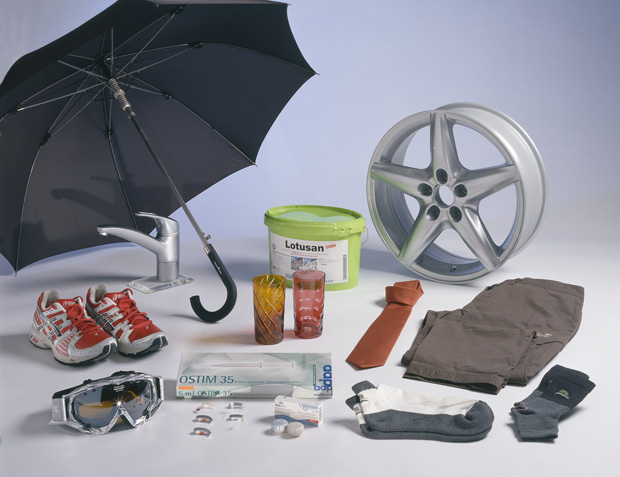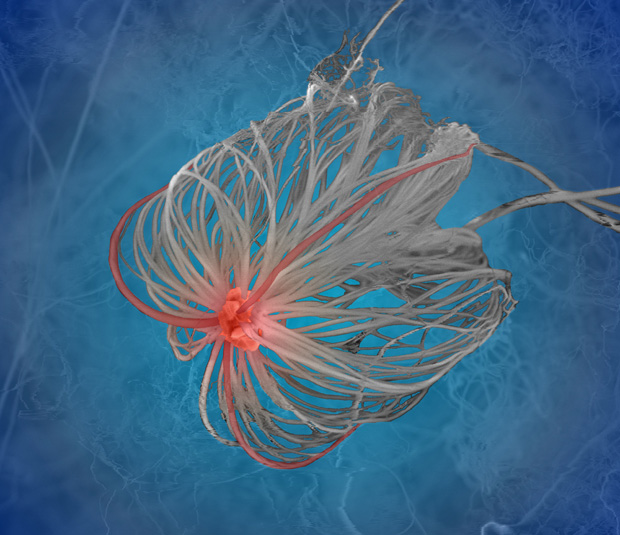
Techtextil Forum invitation to speakers
In the run in to Techtextil, the leading trade fair for technical textiles and industrial nonwovens, organisers Messe Frankfurt have published the following article on the spread of nanotechnology in technical textiles. The article shows how nanotechnology is being used in a growing number of applications from clothing, through construction to regenerative medicine. Techtextil takes place in Frankfurt from 11-13 June.

7th May 2013
Innovation in Textiles
|
Frankfurt
In the run in to Techtextil, the leading trade fair for technical textiles and industrial nonwovens, organisers Messe Frankfurt have published the following article on the spread of nanotechnology in technical textiles. The article shows how nanotechnology is being used in a growing number of applications from clothing, through construction to regenerative medicine. Techtextil takes place in Frankfurt from 11-13 June.
“Over the last decade, nanotechnology has found its way into almost all sectors. Nanolayers are finding applications in wind turbines to improve the aerodynamics and prevent surface icing. Moreover, microelectronics these days are largely nanoelectronics.

In addition to that, carbon nanostructures are now being used in the development of lightweight building materials. Just in terms of their applications in medicine, pharmaceuticals and medical technology alone, predictions are for double-digit growth. But nanotechnology has enormous potential for applications in the textile sector too. The possible range of applications is as large as that of the textiles themselves. Be it in medical technology, filter technology, functional apparel or automotive construction, well-known exhibitors at Techtextil will, from 11 to 13 June 2013, be showcasing the many and varied areas of application for this innovative technology in Frankfurt am Main.
In Germany, the topic forms an increasingly important focus for the work of the major textile research institutes. For the textile sector has also recognised the potential for nanotechnology. Apparel textiles, with dirt- and water-resistant nano finishes, are already widespread, especially in sports and outdoor wear. Textiles with anti-bacterial qualities, based on the use of silver nanoparticles, have also found their way onto the market. Moreover, rapidly advancing research is opening new horizons all the time.
The anti-bacterial textiles we are talking about are optimised for use in the healthcare sector – as a weapon in the fight against the spread of antibiotic-resistant germs. Other possibilities for medical applications of nano textiles include surgical bandages that can be removed without leaving any residual traces. These can be made from a nonwoven fabric of bio-compatible nanofibre or in the form of sticking plasters that imitate the well-known technique that a gecko's foot uses to cling on.

At the Institute for Textile Machinery and High-Performance Materials Technology at the Technical University of Dresden, (Institut für Textilmaschinen und Textile Hochleistungswerkstofftechnik, TU Dresden) nanofibres made of biopolymers are formed into nonwoven fabric, which are due to come into use in regenerative medicine as so-called 'scaffolds'. These form a structural basis for the cultivation of cells with the aim of creating artificial tissue that can be used for implant purposes.
Nonwovens made with nanofibres can also be used in filter technology; both when filtering the ambient air in buildings and for filtering liquids. They are capable of retaining even the smallest particles, right down to nanoparticles.
Doctors are agreed that clothing with a high level of UV protection can significantly reduce the risk of skin cancer. Here, too, nanotechnology offers a variety of approaches to solutions. Textile coatings containing nanoparticles of titanium oxide or zinc oxide have, thanks to their huge total surface area, an enormous ability to absorb ultraviolet radiation. At the North West German Textile Research Centre (Deutsches Textilforschungszentrum Nord-West) sol-gel coatings, based on nano-sized zinc oxide particles, have been developed and can be applied using conventional methods such as dipping and spraying. The completely wash-resistant layer not only significantly improves UV protection, it also improves resistance to abrasion, whilst having virtually no effect on the degree of whiteness of the fabric.
Nanoparticles can also be used to improve the dimensional stability and wear-resistance of man-made fibres, which are subject to high levels of mechanical stress or direct sunlight, as, for instance, in car seats. This topic is the subject of a research project at the Denkendorf Institute for Textile Chemistry and Chemical Fibres (Institut für Textilchemie und Chemiefasern Denkendorf) in collaboration with various partners, including the proudly traditional company, ETTLIN Textiles, and the textile-processing company, Lindenfarb Textilveredlung Julius Probst. The polyamide-fibre products which have been optimised using nano-sized additives will be capable in future of being processed on traditional machines without any major technical changes.
Textiles in polyester have only limited moisture-absorbing and water retaining capabilities, which make them more difficult to wash and limit their range of applications from a technical point of view. Working with a number of other partners, research and development staff from the German Institute for Wool Research at Aachen University (Deutsches Institut für Wollforschung, RWTH Aachen) and from the companies, Wirth Fulda and Märkische Faser, have achieved significant improvements in the hydrophilic properties of polyester fabrics.

Using a nanometre-thin polyamine coating, it has proved possible to increase the water absorbency of PET microfibre fabrics by up to 40 per cent by weight, compared to the original material. Washability and wash-resistance have also been significantly improved, with simultaneous cost reductions as against traditional solutions. Suppliers for the motor vehicle industry should benefit from this improvement as much as apparel manufacturers.
Carbon nanotubes can be embedded in antistatic clothing and packaging fabrics, as in protective suits for cleanrooms or for blast protection, for example. They are already playing an important role in multifunctional technical textiles with improved mechanical, electrical and shielding properties. The stability of textile reinforcements in constructional engineering can be improved using nano coatings as can the flame resistance and dyeability of technical textiles and clothing fabrics. And there are many other examples that could be included here.
The multitude of possible applications and on-going development projects lead us to expect that nanotechnology will soon be a central feature of the textile industry. In this respect, Techtextil 2013 offers a glimpse into the future.
As the leading international fair in its field, Techtextil 2013 (11 to 13 June 2013) brings together all the product groups and areas of application for technical textiles in a central venue and has thus assumed a role as sector highlight. Here, the worlds of industry, research, development and sales will find the entire range of technical textiles and nonwovens in all relevant disciplines at an innovations platform that is unique in the world. It takes place once every two years in Frankfurt. This year, particular attention will be paid to the potential of nanofibres.
Techtextil is held concurrently with Texprocess, Leading International Trade Fair for Processing Textile and Flexible Materials, and runs from 10 to 13 June 2013. At Texprocess, manufacturers from all over the world present their high-tech solutions for the apparel industry and textile processing. The spectrum of products ranges from design, pattern development and cutting, via sewing and joining, to embroidery, textile finishing, IT and logistics. The première of Texprocess in 2011 attracted 326 exhibitors and 17,000 trade visitors, 6,500 of them from Techtextil.”

Business intelligence for the fibre, textiles and apparel industries: technologies, innovations, markets, investments, trade policy, sourcing, strategy...
Find out more